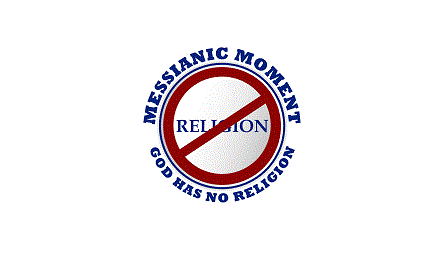Except for the chapters devoted to the sin of the Golden Calf, from here until the end of this book of the Torah, we are given a detailed account of the manufacturing of the Tabernacle.
These chapters outline the instructions from God for building the Ark of the Covenant, the menorah, the table for the showbread, the altar and the types of materials to be used for the tent and its supports.
And that’s it for this parashah.
If you prefer to watch a video, click on this link: Watch the video.
The Tabernacle played an integral role in the lives of the Israelites as they wandered through the desert, as well as did the Temple in Jerusalem.
There have been different interpretations by Jewish biblical scholars of what the Tabernacle represents, and as a Messianic Jew, I am also familiar with the Christian thoughts (initiated by Saul/Paul) that we, as members of the body of the Messiah, are ourselves a tabernacle, or temple, or church, since we have the Holy Spirit, the Ruach HaKodesh, living within us. Just as God was known to be present in the Tabernacle in the desert, Christians believe that they are a tabernacle because God is present in them.
The Rambam (Maimonides) said the Tabernacle was the way God helped the Jewish people to wean themselves from the pagan practices many had adopted during the four centuries they served as slaves in Egypt, and that makes sense to me. Even much later, when Gentiles were accepting Yeshua as their Messiah and converting from their pagan practices, the four commands that the Elders in Jerusalem required of them (Acts 15) were designed to wean them from their pagan lifestyles and allow them to learn how to become Torah observant in a manner that wouldn’t be too difficult a change to do, all at once.
I think the churches and temples today are where same-thinking people can gather and support each other. They serve as a meeting place for communal worship, but I have always thought the communion with each other was as important as the communion with God.
Too many people go to church or shul once a week on their Sabbath and feel they have “done their part”; the rest of the week they live as they want to. I also have known people who feel that going to their congregational meeting place is a commandment, and by doing so they are worshipping God correctly.
That’s not true – there is no place, anywhere, in the Bible where we are commanded to go to the temple every weekend. We are commanded to go to where God places his name three times a year to sacrifice, but other than that our communion with God is to be daily, hourly, every second of our lives, no matter where we are.
In other words, going to church or to the temple doesn’t make you a good Christian or a faithful Jew; what does is our relationship with God and how we act when no one else is around.
I am sure you have heard the adage that an honest person will do the right thing even when they know no one else is watching. In the same way, a faithful person will be praying and doing as God wants, whether or not anyone else can see, whether or not they go to a house of worship.
Now don’t get me wrong…there is nothing bad or incorrect about attending church or shul on a regular basis. In fact, that is a good thing because we need to support and encourage each other, and the best way to do that is through getting together. But the Tabernacle, the Temple in Jerusalem, Westminster Abbey, or the small shul a Shabbat-walk away, are all just symbols of the presence of God in our life. It is not wrong to have one, as some might say, and the building of the third Temple is not a bad thing, either. Until such time as God completes his plan of salvation and his Shekinah glory is among us, forever, we need a physical place to meet and worship.
The point is that a place where we gather and worship together, as well as schmooze over coffee and sweets, is just as important a reminder of God’s presence in our lives as the Tabernacle was for the children of Israel as they wandered through the desert.
As I said above, except for a chapter or two, from here to the end of this book we are told, in extreme detail, about the building of the Tabernacle and it is, understandably, a little boring at times. I don’t know why there is so much detail, but I hope that as we delve further into the remaining parashot we may receive some revelation.
Thank you for being here and please don’t forget to subscribe using the SUBSCRIBE button in the right-hand margin and on my YouTube channel, as well. You can use the link above to get there.
And remember that I always welcome your comments.
Until next time, L’hitraot and Shabbat Shalom!
